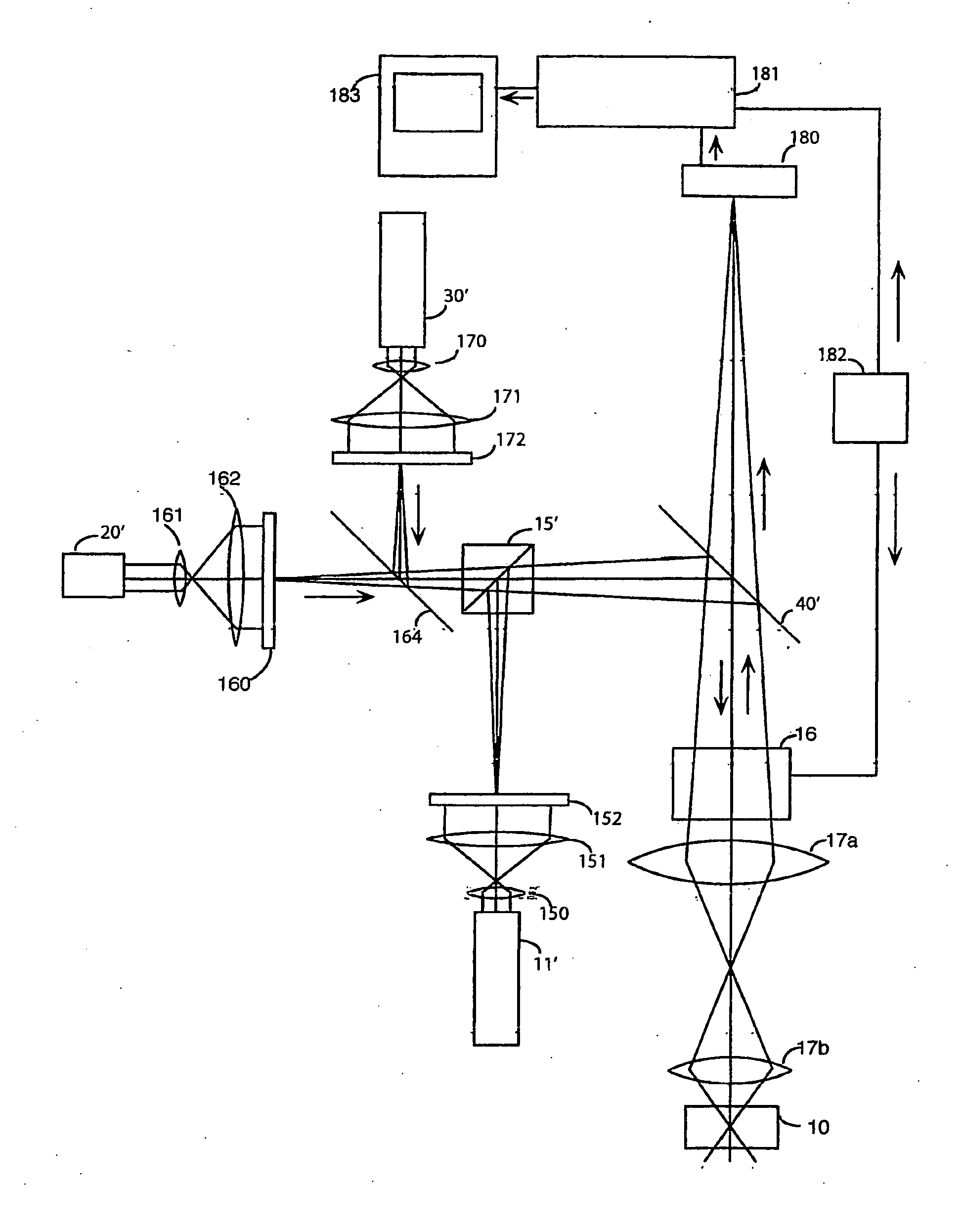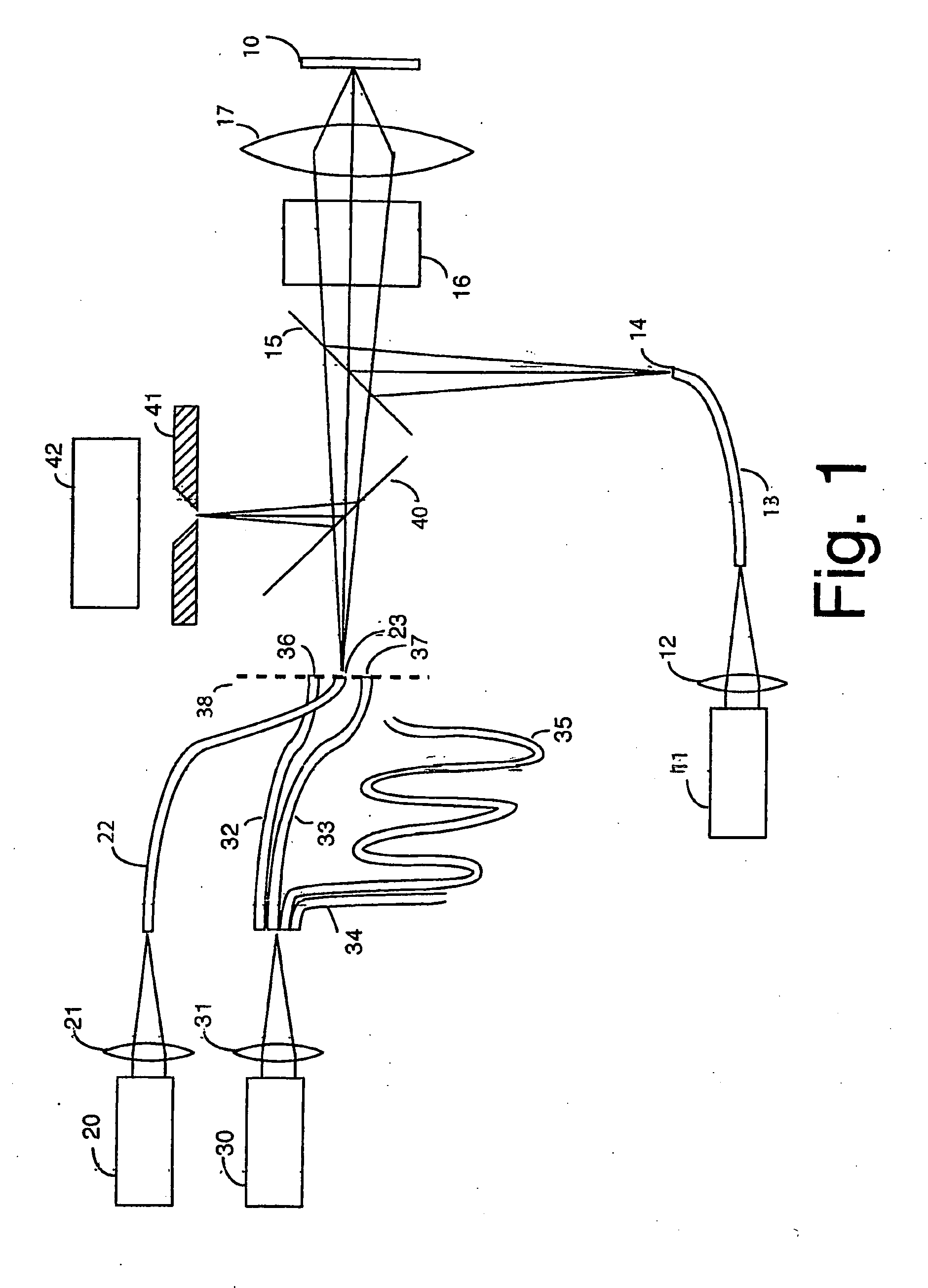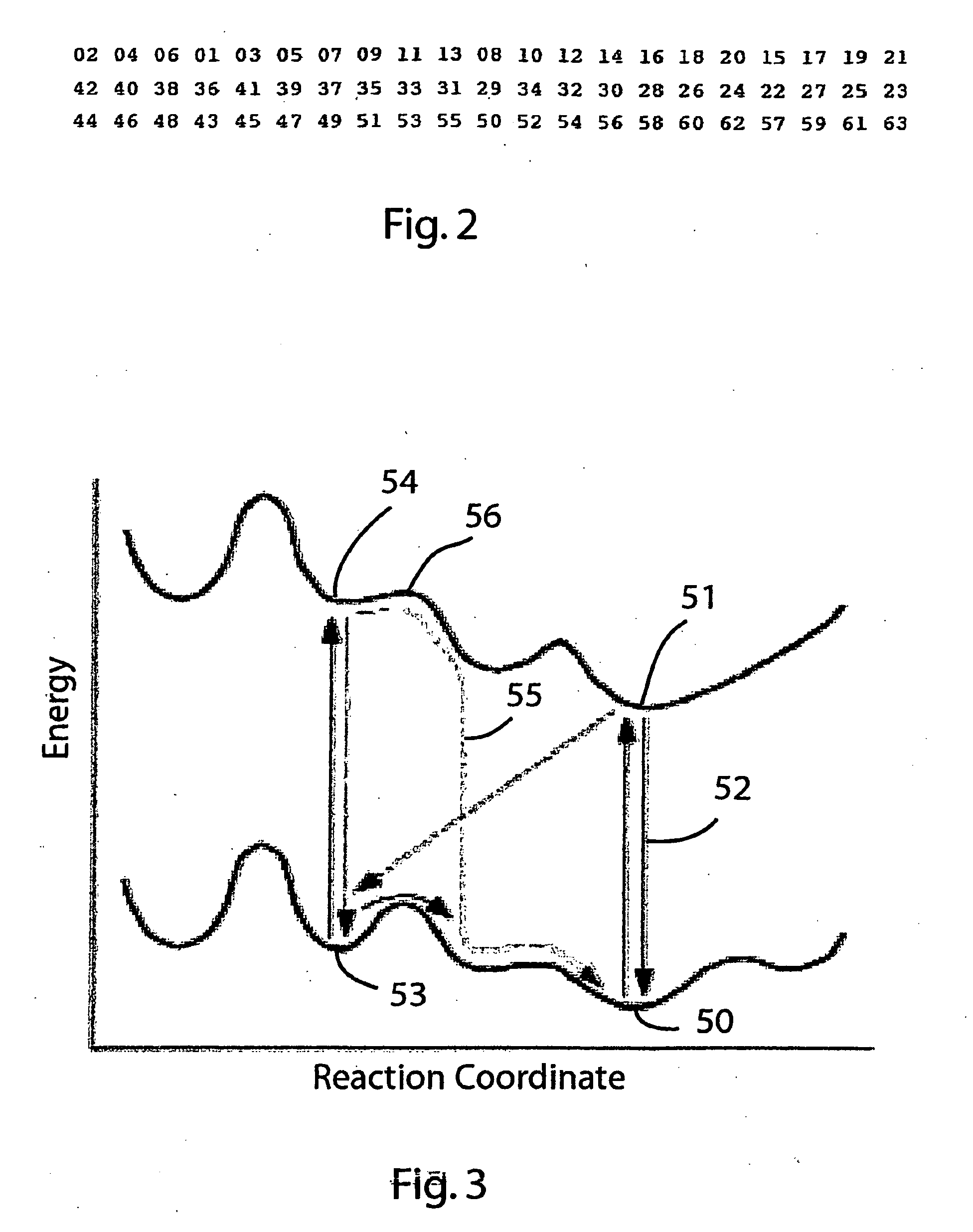High resolution microscopy using an optically switchable fluorophore
a fluorophore and high-resolution technology, applied in the field of microscopy, can solve the problems of fast and precisely synchronized pulses, and achieve the effects of maximizing the number of fluorescent photons emitted, good time resolution, and improving resolution
- Summary
- Abstract
- Description
- Claims
- Application Information
AI Technical Summary
Benefits of technology
Problems solved by technology
Method used
Image
Examples
Embodiment Construction
[0024]The first embodiment of the present invention to be described is a modification of a microscope described in FIG. 10 of Baer, U.S. Pat. No. 5,952,668, which is incorporated herein by reference. The specimen 10 contains cells that express the protein Dronpa in some chosen subcellular element to be visualized. The output of laser 11, at the wavelength 488 nm, effective as an “off” switch for Dronpa, is focused by lens 12 on one end of optical fiber 13, the other end 14 of which is in a real image plane, and following reflection by beam splitter 15, passage through x, y scanner device 16 and focusing by objective lens 17, the output of laser 11 is focused on a spot in specimen 10. We can imagine that the spot is initially at or near the upper left hand corner of a field to be raster scanned.
[0025]After sufficient time to thoroughly turn off the Dronpa molecules in the focused spot, laser 11 is turned off and laser 20 emits a 100 to 200 femtosecond pulse at 405 nm, a wavelength ef...
PUM
| Property | Measurement | Unit |
|---|---|---|
| quantum efficiency | aaaaa | aaaaa |
| wavelength | aaaaa | aaaaa |
| wavelength | aaaaa | aaaaa |
Abstract
Description
Claims
Application Information
 Login to View More
Login to View More - R&D Engineer
- R&D Manager
- IP Professional
- Industry Leading Data Capabilities
- Powerful AI technology
- Patent DNA Extraction
Browse by: Latest US Patents, China's latest patents, Technical Efficacy Thesaurus, Application Domain, Technology Topic, Popular Technical Reports.
© 2024 PatSnap. All rights reserved.Legal|Privacy policy|Modern Slavery Act Transparency Statement|Sitemap|About US| Contact US: help@patsnap.com










